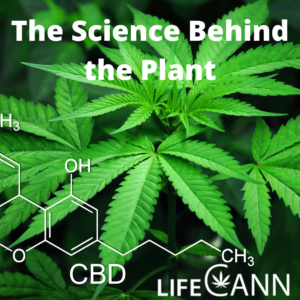The Science Behind the Plant
 Cannabis: An Ancient Medicine
Cannabis: An Ancient Medicine
By Fernando Fandino-Sende, MD
Most ancient cultures didn’t grow the plant to get high, but as herbal medicine, likely starting in Asia and is known that Chinese emperor Fu His noted that Cannabis was a popular medicine that possessed both yin and yang (ca. 2900 BC). In western civilization the Greek physician Galen prescribed medical marijuana in the year 170 AC. Marijuana was used as a medicine by Queen Victoria of England who reportedly used cannabis in 1840 for menstrual cramps.
The prohibition of marijuana begins
In America, the Marijuana Tax Act of 1937 placed a tax on the sale of cannabis and a fine to doctors who will recommend its use. Soon enough it became prohibited and in the 1970s President Nixon signed the Controlled Substance Act where marijuana is classified as Schedule 1, as is heroin and LSD and is defined as a substance without any medical value and highly addictive.
Now we know better and despite its limitation regarding clinical studies, every day it seems a new property, a new indication for cannabis use is identified.
What is it that makes the cannabinoids in marijuana (THC and CBD) react with our bodies, healing and offering relief to the ill?
One medicine for one thousand diseases
What makes this plant such a unique medicine, able to treat such a large number of vastly different conditions?
In traditional medicine, there are one thousand remedies for one disease. Cannabis medicine is one remedy for one thousand diseases.
Only in the last couple of decades that scientists have truly even begun to understand the ways cannabis works within our bodies.
Scientists find cannabinoid receptors
It all started in 1964 when a scientist from Israel named Raphael Mechoulam was able to identify and isolate THC for the first time – just prior to which they were able to identify CBD as well. In 1988, the first cannabinoid receptor was found in the brain of a rat. These cannabinoid receptors turned out to be plentiful in the brain – more so than any other neurotransmitter receptor.
In 1993, a second cannabinoid receptor was found – as a part of the immune and nervous system. Dubbed CB2 (the CB receptors in the brain officially dubbed CB1 receptors) receptors are found to be plentiful throughout the gut, spleen, liver, heart kidneys, bones, blood vessels, lymph cells, and even the reproductive organs.
Why do we have cannabinoid receptors in the first place?
The answer to that question started to unfold in 1992 when the first endocannabinoid was discovered. Anandamide was the first, naturally occurring endogenous cannabinoid, or endocannabinoid. It was found by Raphael Mechoulam as well as researchers William Devane and Dr. Lumir Hanus.
This is still only one of two known and relatively well-understood endocannabinoids. It attaches to the same CB receptors as THC and it was named after the Sanskrit word for bliss.
A second endocannabinoid was identified in 1995, discovered by none other than Mechoulam’s group yet again. This second major endocannabinoid was dubbed 2-arachidonoylglycerol or “2-AG” to keep it simple. This particular endocannabinoid attaches to both CB1 and CB2 receptors.
So now we have a new system in our bodies, the Endocannabinoid System (ECS). Besides the circulatory, the nervous and skeletal system as well as nine others, we now have the ECS. This is still little known to the medical community and you will be surprised knowing that only 14% of medical schools teach about its existence.






